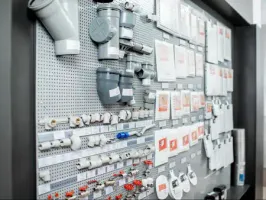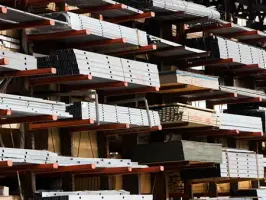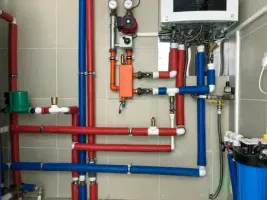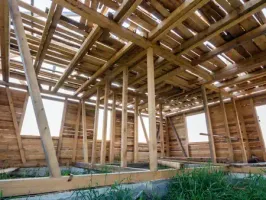- Categories
- Construction and Buildings
- Construction and Buildings
- Construction and Buildings
- Construction and Buildings
- Construction and Buildings
- Construction and Buildings
- Construction and Buildings
- Construction and Buildings
- Construction and Buildings
- Construction and Buildings
- Construction and Buildings
- Construction and Buildings
- Construction and Buildings
- Construction and Buildings
- Construction and Buildings
- Construction and Buildings
- Construction and Buildings
- Construction and Buildings
- Construction and Buildings
- Construction and Buildings
- Construction and Buildings
- Construction and Buildings
- Construction and Buildings
- Construction and Buildings
- Construction and Buildings
- Construction and Buildings
- Construction and Buildings
- Construction and Buildings
- Construction and Buildings
- Construction and Buildings
- Construction and Buildings
- Construction and Buildings
- Construction and Buildings
- Construction and Buildings
- Construction and Buildings
- Construction and Buildings
- Construction and Buildings
- Construction and Buildings
- Construction and Buildings
- Construction and Buildings
- Construction and Buildings
- Construction and Buildings
- Construction and Buildings
- Construction and Buildings
- Construction and Buildings
- Construction and Buildings
- Construction and Buildings
- Construction and Buildings
- Construction and Buildings
- Construction and Buildings
- Construction and Buildings
- Construction and Buildings
- Construction and Buildings
- Construction and Buildings
- Construction and Buildings
- Construction and Buildings
- Construction and Buildings
- Construction and Buildings
- Construction and Buildings
- Construction and Buildings
- Construction and Buildings
- Construction and Buildings
- Construction and Buildings
- Construction and Buildings
- Construction and Buildings
- Construction and Buildings
- Construction and Buildings
- Construction and Buildings
- Construction and Buildings
- Construction and Buildings
- Construction and Buildings
- Construction and Buildings
- Construction and Buildings
- Construction and Buildings
- Construction and Buildings
- Construction and Buildings
- Construction and Buildings
- Construction and Buildings
- Construction and Buildings
- Construction and Buildings
- Construction and Buildings
- Construction and Buildings
- Construction and Buildings
- Construction and Buildings
- Construction and Buildings
- Construction and Buildings
- Construction and Buildings
- Construction and Buildings
- Construction and Buildings
- Construction and Buildings
- Construction and Buildings
- Construction and Buildings
- Construction and Buildings
- Construction and Buildings
- Construction and Buildings
- Construction and Buildings
- Construction and Buildings
- Construction and Buildings
- Construction and Buildings
- Construction and Buildings
- Construction and Buildings
- Construction and Buildings
- Construction and Buildings
- Construction and Buildings
- Construction and Buildings
- Construction and Buildings
- Construction and Buildings
- Construction and Buildings
- Construction and Buildings
- Construction and Buildings
- Construction and Buildings
- Construction and Buildings
- Construction and Buildings
- Construction and Buildings
- Construction and Buildings
- Construction and Buildings
- Construction and Buildings
- Construction and Buildings
- Construction and Buildings
- Construction and Buildings
- Construction and Buildings
- Construction and Buildings
- Construction and Buildings
- Construction and Buildings
- Construction and Buildings
- Construction and Buildings
- Construction and Buildings
- Construction and Buildings
- Construction and Buildings
- Construction and Buildings
- Construction and Buildings
- Construction and Buildings
- Construction and Buildings
- Construction and Buildings
- Construction and Buildings
- Construction and Buildings
- Construction and Buildings
- Construction and Buildings
- Construction and Buildings
- Construction and Buildings
- Construction and Buildings
- Construction and Buildings
- Construction and Buildings
- Construction and Buildings
- Construction and Buildings
- Construction and Buildings
- Construction and Buildings
- Construction and Buildings
- Construction and Buildings
- Construction and Buildings
- Construction and Buildings
- Construction and Buildings
- Construction and Buildings
- Construction and Buildings
- Construction and Buildings
- Construction and Buildings
- Construction and Buildings
- Construction and Buildings
- Construction and Buildings
- Construction and Buildings
- Construction and Buildings
- Construction and Buildings
- Construction and Buildings
- Construction and Buildings
- Construction and Buildings
- Construction and Buildings
- Construction and Buildings
- Construction and Buildings
- Construction and Buildings
- Construction and Buildings
- Construction and Buildings
- Construction and Buildings
- Construction and Buildings
- Construction and Buildings
- Construction and Buildings
- Construction and Buildings
- Construction and Buildings
- Construction and Buildings
- Construction and Buildings
- Construction and Buildings
- Construction and Buildings
- Construction and Buildings
- Construction and Buildings
- Construction and Buildings
- Construction and Buildings
- Construction and Buildings
- Construction and Buildings
- Construction and Buildings
- Construction and Buildings
- Construction and Buildings
- Construction and Buildings
- Construction and Buildings
- Construction and Buildings
- Construction and Buildings
- Construction and Buildings
- Construction and Buildings
- Construction and Buildings
- Construction and Buildings
- Construction and Buildings
- Construction and Buildings
- Construction and Buildings
- Construction and Buildings
- Construction and Buildings
- Construction and Buildings
- Construction and Buildings
- Construction and Buildings
- Construction and Buildings
- Construction and Buildings
- Construction and Buildings
- Construction and Buildings
- Construction and Buildings
- Construction and Buildings
- Construction and Buildings
- Construction and Buildings
- Construction and Buildings
- Construction and Buildings
- Construction and Buildings
- Construction and Buildings
- Construction and Buildings
- Construction and Buildings
- Construction and Buildings
- Construction and Buildings
- Construction and Buildings
- Construction and Buildings
- Construction and Buildings
- Construction and Buildings
- Construction and Buildings
- Construction and Buildings
- Construction and Buildings
- Construction and Buildings
- Construction and Buildings
- Construction and Buildings
- Construction and Buildings
- Construction and Buildings
- Construction and Buildings
- Construction and Buildings
- Construction and Buildings
- Construction and Buildings
- Construction and Buildings
- Construction and Buildings
- Construction and Buildings
- Construction and Buildings
- Construction and Buildings
- Construction and Buildings
- Construction and Buildings
- Construction and Buildings
- Construction and Buildings
- Construction and Buildings
- Construction and Buildings
- Construction and Buildings
- Construction and Buildings
- Construction and Buildings
- Construction and Buildings
- Construction and Buildings
- Construction and Buildings
- Construction and Buildings
- Construction and Buildings
- Construction and Buildings
- Construction and Buildings
- Construction and Buildings
- Construction and Buildings
- Construction and Buildings
- Construction and Buildings
- Construction and Buildings
- Construction and Buildings
- Construction and Buildings
- Construction and Buildings
- Construction and Buildings
- Construction and Buildings
- Construction and Buildings
- Construction and Buildings
- Construction and Buildings
- Construction and Buildings
- Construction and Buildings
- Construction and Buildings
- Construction and Buildings
- Construction and Buildings
- Construction and Buildings
- Construction and Buildings
- Construction and Buildings
- Construction and Buildings
- Construction and Buildings
- Construction and Buildings
- Construction and Buildings
- Construction and Buildings
- Construction and Buildings
- Construction and Buildings
- Construction and Buildings
- Construction and Buildings
- Construction and Buildings
- Construction and Buildings
- Construction and Buildings
- Construction and Buildings
- Construction and Buildings
- Construction and Buildings
- Construction and Buildings
- Construction and Buildings
- Construction and Buildings
- Construction and Buildings
- Construction and Buildings
- Construction and Buildings
- Construction and Buildings
- Construction and Buildings
- Construction and Buildings
- Construction and Buildings
- Construction and Buildings
- Construction and Buildings
- Construction and Buildings
- Construction and Buildings
- Construction and Buildings
- Construction and Buildings
- Construction and Buildings
- Construction and Buildings
- Construction and Buildings
- Construction and Buildings
- Construction and Buildings
- Construction and Buildings
- Construction and Buildings
- Construction and Buildings
- Construction and Buildings
- Construction and Buildings
- Construction and Buildings
- Construction and Buildings
- Construction and Buildings
- Construction and Buildings
- Construction and Buildings
- Construction and Buildings
- Construction and Buildings
- Construction and Buildings
- Construction and Buildings
- Construction and Buildings
- Construction and Buildings
- Construction and Buildings
- Construction and Buildings
- Construction and Buildings
- Construction and Buildings
- Construction and Buildings
- Construction and Buildings
- Construction and Buildings
- Construction and Buildings
- Construction and Buildings
- Construction and Buildings
- Construction and Buildings
- Construction and Buildings
- Construction and Buildings
- Construction and Buildings
- Construction and Buildings
- Construction and Buildings
- Construction and Buildings
- Construction and Buildings
- Construction and Buildings
- Construction and Buildings
- Construction and Buildings
- Construction and Buildings
- Construction and Buildings
- Construction and Buildings
- Construction and Buildings
- Construction and Buildings
- Construction and Buildings
- Construction and Buildings
- Construction and Buildings
- Construction and Buildings
- Construction and Buildings
- Construction and Buildings
- Construction and Buildings
- Construction and Buildings
- Construction and Buildings
- Construction and Buildings
- Construction and Buildings
- Construction and Buildings
- Construction and Buildings
- Construction and Buildings
- Construction and Buildings
- Construction and Buildings
- Construction and Buildings
- Construction and Buildings
- Construction and Buildings
- Construction and Buildings
- Construction and Buildings
- Construction and Buildings
- Construction and Buildings
- Construction and Buildings
- Construction and Buildings
- Construction and Buildings
- Construction and Buildings
- Construction and Buildings
- Construction and Buildings
- Construction and Buildings
- Construction and Buildings
- Construction and Buildings
- Construction and Buildings
- Construction and Buildings
- Construction and Buildings
- Construction and Buildings
- Construction and Buildings
- Construction and Buildings
- Construction and Buildings
- Construction and Buildings
- Construction and Buildings
- Construction and Buildings
- Construction and Buildings
- Construction and Buildings
- Construction and Buildings
- Construction and Buildings
- Construction and Buildings
- Construction and Buildings
- Construction and Buildings
- Construction and Buildings
- Construction and Buildings
- Construction and Buildings
- Construction and Buildings
- Construction and Buildings
- Construction and Buildings
- Construction and Buildings
- Construction and Buildings
- Construction and Buildings
- Construction and Buildings
- Construction and Buildings
- Construction and Buildings
- Construction and Buildings
- Construction and Buildings
- Construction and Buildings
- Construction and Buildings
- Construction and Buildings
- Construction and Buildings
- Construction and Buildings
- Construction and Buildings
- Construction and Buildings
- Construction and Buildings
- Construction and Buildings
- Construction and Buildings
- Construction and Buildings
- Construction and Buildings
- Construction and Buildings
- Construction and Buildings
- Construction and Buildings
- Construction and Buildings
- Construction and Buildings
- Construction and Buildings
- Construction and Buildings
- Construction and Buildings
- Construction and Buildings
- Construction and Buildings
- Construction and Buildings
- Construction and Buildings
- Construction and Buildings
- Construction and Buildings
- Construction and Buildings
- Construction and Buildings
- Construction and Buildings
- Construction and Buildings
- Construction and Buildings
- Construction and Buildings
- Construction and Buildings
- Construction and Buildings
- Construction and Buildings
- Construction and Buildings
- Construction and Buildings
- Construction and Buildings
- Construction and Buildings
- Construction and Buildings
- Construction and Buildings
- Construction and Buildings
- Construction and Buildings
- Construction and Buildings
- Construction and Buildings
- Construction and Buildings
- Construction and Buildings
- Construction and Buildings
- Construction and Buildings
- Construction and Buildings
- Construction and Buildings
- Construction and Buildings
- Construction and Buildings
- Construction and Buildings
- Construction and Buildings
- Construction and Buildings
- Construction and Buildings
- Construction and Buildings
- Construction and Buildings
- Construction and Buildings
- Construction and Buildings
- Construction and Buildings
- Construction and Buildings
- Construction and Buildings
- Construction and Buildings
- Construction and Buildings
- Construction and Buildings
- Construction and Buildings
- Construction and Buildings
- Construction and Buildings
- Construction and Buildings
- Construction and Buildings
- Construction and Buildings
- Construction and Buildings
- Construction and Buildings
- Construction and Buildings
- Construction and Buildings
- Construction and Buildings
- Construction and Buildings
- Construction and Buildings
- Construction and Buildings
- Construction and Buildings
- Construction and Buildings
- Construction and Buildings
- Construction and Buildings
- Construction and Buildings
- Construction and Buildings
- Construction and Buildings
- Construction and Buildings
- Construction and Buildings
- Construction and Buildings
- Construction and Buildings
- Construction and Buildings
- Construction and Buildings
- Construction and Buildings
- Construction and Buildings
- Construction and Buildings
- Construction and Buildings
- Construction and Buildings
- Construction and Buildings
- Construction and Buildings
- Construction and Buildings
- Construction and Buildings
- Construction and Buildings
- Construction and Buildings
- Construction and Buildings
- Construction and Buildings
- Construction and Buildings
- Construction and Buildings
- Construction and Buildings
- Construction and Buildings
- Construction and Buildings
- Construction and Buildings
- Construction and Buildings
- Construction and Buildings
- Construction and Buildings
- Construction and Buildings
- Construction and Buildings
- Construction and Buildings
- Construction and Buildings
- Construction and Buildings
- Construction and Buildings
- Construction and Buildings
- Construction and Buildings
- Construction and Buildings
- Construction and Buildings
- Construction and Buildings
- Construction and Buildings
- Construction and Buildings
- Construction and Buildings
- Construction and Buildings
- Construction and Buildings
- Construction and Buildings
- Construction and Buildings
- Construction and Buildings
- Construction and Buildings
- Construction and Buildings
- Construction and Buildings
- Construction and Buildings
- Construction and Buildings
- Construction and Buildings
- Construction and Buildings
- Construction and Buildings
- Construction and Buildings
- Construction and Buildings
- Construction and Buildings
- Construction and Buildings
- Construction and Buildings
- Construction and Buildings
- Construction and Buildings
- Construction and Buildings
- Construction and Buildings
- Construction and Buildings
- Construction and Buildings
- Construction and Buildings
- Construction and Buildings
- Construction and Buildings
- Construction and Buildings
- Construction and Buildings
- Construction and Buildings
- Construction and Buildings
- Construction and Buildings
- Construction and Buildings
- Construction and Buildings
- Construction and Buildings
- Construction and Buildings
- Construction and Buildings
- Construction and Buildings
- Construction and Buildings
- Construction and Buildings
- Construction and Buildings
- Construction and Buildings
- Construction and Buildings
- Construction and Buildings
- Construction and Buildings
- Construction and Buildings
- Construction and Buildings
- Construction and Buildings
- Construction and Buildings
- Construction and Buildings
- Construction and Buildings
- Construction and Buildings
- Construction and Buildings
- Construction and Buildings
- Construction and Buildings
- Construction and Buildings
- Construction and Buildings
- Construction and Buildings
- Construction and Buildings
- Construction and Buildings
- Construction and Buildings
- Construction and Buildings
- Construction and Buildings
- Construction and Buildings
- Construction and Buildings
- Construction and Buildings
- Construction and Buildings
- Construction and Buildings
- Construction and Buildings
- Construction and Buildings
- Construction and Buildings
- Construction and Buildings
- Construction and Buildings
- Construction and Buildings
- Construction and Buildings
- Construction and Buildings
- Construction and Buildings
- Construction and Buildings
- Construction and Buildings
- Construction and Buildings
- Construction and Buildings
- Construction and Buildings
- Construction and Buildings
- Construction and Buildings
- Construction and Buildings
- Construction and Buildings
- Construction and Buildings
- Construction and Buildings
- Construction and Buildings
- Construction and Buildings
- Construction and Buildings
- Construction and Buildings
- Construction and Buildings
- Construction and Buildings
- Construction and Buildings
- Construction and Buildings
- Construction and Buildings
- Construction and Buildings
- Construction and Buildings
- Construction and Buildings
- Construction and Buildings
- Construction and Buildings
- Construction and Buildings
- Construction and Buildings
- Construction and Buildings
- Construction and Buildings
- Construction and Buildings
- Construction and Buildings
- Construction and Buildings
- Construction and Buildings
- Construction and Buildings
- Construction and Buildings
- Construction and Buildings
- Construction and Buildings
- Construction and Buildings
- Construction and Buildings
- Construction and Buildings
- Construction and Buildings
- Construction and Buildings
- Construction and Buildings
- Construction and Buildings
- Construction and Buildings
- Construction and Buildings
- Construction and Buildings
- Construction and Buildings
- Construction and Buildings
- Construction and Buildings
- Construction and Buildings
- Construction and Buildings
- Construction and Buildings
- Construction and Buildings
- Construction and Buildings
- Construction and Buildings
- Construction and Buildings
- Construction and Buildings
- Construction and Buildings
- Construction and Buildings
- Construction and Buildings
- Construction and Buildings
- Construction and Buildings
- Construction and Buildings
- Construction and Buildings
- Construction and Buildings
- Construction and Buildings
- Construction and Buildings
- Construction and Buildings
- Construction and Buildings
- Construction and Buildings
- Construction and Buildings
- Construction and Buildings
- Construction and Buildings
- Construction and Buildings
- Construction and Buildings
- Construction and Buildings
- Construction and Buildings
- Construction and Buildings
- Construction and Buildings
- Construction and Buildings
- Construction and Buildings
- Construction and Buildings
- Construction and Buildings
- Construction and Buildings
- Construction and Buildings
- Construction and Buildings
- Construction and Buildings
- Construction and Buildings
- Construction and Buildings
- Construction and Buildings
- Construction and Buildings
- Construction and Buildings
- Construction and Buildings
- Construction and Buildings
- Construction and Buildings
- Construction and Buildings
- Construction and Buildings
- Construction and Buildings
- Construction and Buildings
- Construction and Buildings
- Construction and Buildings
- Construction and Buildings
- Construction and Buildings
- Construction and Buildings
- Construction and Buildings
- Construction and Buildings
- Construction and Buildings
- Construction and Buildings
- Construction and Buildings
- Construction and Buildings
- Construction and Buildings
- Construction and Buildings
- Construction and Buildings
- Construction and Buildings
- Construction and Buildings
- Construction and Buildings
- Construction and Buildings
- Construction and Buildings
- Construction and Buildings
- Construction and Buildings
- Construction and Buildings
- Construction and Buildings
- Construction and Buildings
- Construction and Buildings
- Construction and Buildings
- Construction and Buildings
- Construction and Buildings
- Construction and Buildings
- Construction and Buildings
- Construction and Buildings
- Construction and Buildings
- Construction and Buildings
- Construction and Buildings
- Construction and Buildings
- Construction and Buildings
- Construction and Buildings
- Construction and Buildings
- Construction and Buildings
- Construction and Buildings
- Construction and Buildings
- Construction and Buildings
- Construction and Buildings
- Construction and Buildings
- Construction and Buildings
- Construction and Buildings
- Construction and Buildings
- Construction and Buildings
- Construction and Buildings
- Construction and Buildings
- Construction and Buildings
- Construction and Buildings
- Construction and Buildings
- Construction and Buildings
- Construction and Buildings
- Construction and Buildings
- Construction and Buildings
- Construction and Buildings
- Construction and Buildings
- Construction and Buildings
- Construction and Buildings
- Construction and Buildings
- Construction and Buildings
- Construction and Buildings
- Construction and Buildings
- Construction and Buildings
- Construction and Buildings
- Construction and Buildings
- Construction and Buildings
- Construction and Buildings
- Construction and Buildings
- Construction and Buildings
- Construction and Buildings
- Construction and Buildings
- Construction and Buildings
- Construction and Buildings
- Construction and Buildings
- Construction and Buildings
- Construction and Buildings
- Construction and Buildings
- Construction and Buildings
- Construction and Buildings
- Construction and Buildings
- Construction and Buildings
- Construction and Buildings
- Construction and Buildings
- Construction and Buildings
- Construction and Buildings
- Construction and Buildings
- Construction and Buildings
- Construction and Buildings
- Construction and Buildings
- Construction and Buildings
- Construction and Buildings
- Construction and Buildings
- Construction and Buildings
- Construction and Buildings
- Construction and Buildings
- Construction and Buildings
- Construction and Buildings
- Construction and Buildings
- Construction and Buildings
- Construction and Buildings
- Construction and Buildings
- Construction and Buildings
- Construction and Buildings
- Construction and Buildings
- Construction and Buildings
- Construction and Buildings
- Construction and Buildings
- Construction and Buildings
- Construction and Buildings
- Construction and Buildings
- Construction and Buildings
- Construction and Buildings
- Construction and Buildings
- Construction and Buildings
- Construction and Buildings
- Construction and Buildings
- Construction and Buildings
- Construction and Buildings
- Construction and Buildings
- Construction and Buildings
- Construction and Buildings
- Construction and Buildings
- Construction and Buildings
- Construction and Buildings
- Construction and Buildings
- Construction and Buildings
- Construction and Buildings
- Construction and Buildings
- Construction and Buildings
- Construction and Buildings
- Construction and Buildings
- Construction and Buildings
- Construction and Buildings
- Construction and Buildings
- Construction and Buildings
- Construction and Buildings
- Construction and Buildings
- Construction and Buildings
- Construction and Buildings
- Construction and Buildings
- Construction and Buildings
- Construction and Buildings
- Construction and Buildings
- Construction and Buildings
- Construction and Buildings
- Construction and Buildings
- Construction and Buildings
- Construction and Buildings
- Construction and Buildings
- Construction and Buildings
- Construction and Buildings
- Construction and Buildings
- Construction and Buildings
- Construction and Buildings
- Construction and Buildings
- Construction and Buildings
- Construction and Buildings
- Construction and Buildings
- Construction and Buildings
- Construction and Buildings
- Construction and Buildings
- Construction and Buildings
- Construction and Buildings
- Construction and Buildings
- Construction and Buildings
- Construction and Buildings
- Construction and Buildings
- Construction and Buildings
- Construction and Buildings
- Construction and Buildings
- Construction and Buildings
- Construction and Buildings
- Construction and Buildings
- Construction and Buildings
- Construction and Buildings
- Construction and Buildings
- Construction and Buildings
- Construction and Buildings
- Construction and Buildings
- Construction and Buildings
- Construction and Buildings
- Construction and Buildings
- Construction and Buildings
- Construction and Buildings
- Construction and Buildings
- Construction and Buildings
- Construction and Buildings
- Construction and Buildings
- Construction and Buildings
- Construction and Buildings
- Construction and Buildings
- Construction and Buildings
- Construction and Buildings
- Construction and Buildings
- Construction and Buildings
- Construction and Buildings
- Construction and Buildings
- Construction and Buildings
- Construction and Buildings
- Construction and Buildings
- Construction and Buildings
- Construction and Buildings
- Construction and Buildings
- Construction and Buildings
- Construction and Buildings
- Construction and Buildings
- Construction and Buildings
- Construction and Buildings
- Construction and Buildings
- Construction and Buildings
- Construction and Buildings
- Construction and Buildings
- Construction and Buildings
- Construction and Buildings
- Construction and Buildings
- Construction and Buildings
- Construction and Buildings
- Construction and Buildings
- Construction and Buildings
- Construction and Buildings
- Construction and Buildings
- Construction and Buildings
- Construction and Buildings
- Construction and Buildings
- Construction and Buildings
- Construction and Buildings
- Construction and Buildings
- Construction and Buildings
- Construction and Buildings
- Construction and Buildings
- Construction and Buildings
- Construction and Buildings
- Construction and Buildings
- Construction and Buildings
- Construction and Buildings
- Construction and Buildings
- Construction and Buildings
- Construction and Buildings
- Construction and Buildings
- Construction and Buildings
- Construction and Buildings
- Construction and Buildings
- Construction and Buildings
- Construction and Buildings
- Construction and Buildings
- Construction and Buildings
- Construction and Buildings
- Construction and Buildings
- Construction and Buildings
- Construction and Buildings
- Construction and Buildings
- Construction and Buildings
- Construction and Buildings
- Construction and Buildings
- Construction and Buildings
- Construction and Buildings
- Construction and Buildings
- Construction and Buildings
- Construction and Buildings
- Construction and Buildings
- Construction and Buildings
- Construction and Buildings
- Construction and Buildings
- Construction and Buildings
- Construction and Buildings
- Construction and Buildings
- Construction and Buildings
- Construction and Buildings
- Construction and Buildings
- Construction and Buildings
- Construction and Buildings
- Construction and Buildings
- Construction and Buildings
- Construction and Buildings
- Construction and Buildings
- Construction and Buildings
- Construction and Buildings
- Construction and Buildings
- Construction and Buildings
- Construction and Buildings
- Construction and Buildings
- Construction and Buildings
- Construction and Buildings
- Construction and Buildings
- Construction and Buildings
- Construction and Buildings
- Construction and Buildings
- Construction and Buildings
- Construction and Buildings
- Construction and Buildings
- Construction and Buildings
- Construction and Buildings
- Construction and Buildings
- Construction and Buildings
- Construction and Buildings
- Construction and Buildings
- Construction and Buildings
- Construction and Buildings
- Construction and Buildings
- Construction and Buildings
- Construction and Buildings
- Construction and Buildings
- Construction and Buildings
- Construction and Buildings
- Construction and Buildings
- Construction and Buildings
- Construction and Buildings
- Construction and Buildings
- Construction and Buildings
- Construction and Buildings
- Construction and Buildings
- Construction and Buildings
- Construction and Buildings
- Construction and Buildings
- Construction and Buildings
- Construction and Buildings
- Construction and Buildings
- Construction and Buildings
- Construction and Buildings
- Construction and Buildings
- Construction and Buildings
- Construction and Buildings
- Construction and Buildings
- Construction and Buildings
- Construction and Buildings
- Construction and Buildings
- Construction and Buildings
- Construction and Buildings
- Construction and Buildings
- Construction and Buildings
- Construction and Buildings
- Construction and Buildings
- Construction and Buildings
- Construction and Buildings
- Construction and Buildings
- Construction and Buildings
- Construction and Buildings
- Construction and Buildings
- Construction and Buildings
- Construction and Buildings
- Construction and Buildings
- Construction and Buildings
- Construction and Buildings
- Construction and Buildings
- Construction and Buildings
- Construction and Buildings
- Construction and Buildings
- Construction and Buildings
- Construction and Buildings
- Construction and Buildings
- Construction and Buildings
- Construction and Buildings
- Construction and Buildings
- Construction and Buildings
- Construction and Buildings
- Construction and Buildings
- Construction and Buildings
- Construction and Buildings
- Construction and Buildings
- Construction and Buildings
- Construction and Buildings
- Construction and Buildings
- Construction and Buildings
- Construction and Buildings
- Construction and Buildings
- Construction and Buildings
- Construction and Buildings
- Construction and Buildings
- Construction and Buildings
- Construction and Buildings
- Construction and Buildings
- Construction and Buildings
- Construction and Buildings
- Construction and Buildings
- Construction and Buildings
- Construction and Buildings
- Construction and Buildings
- Construction and Buildings
- Construction and Buildings
- Construction and Buildings
- Construction and Buildings
- Construction and Buildings
- Construction and Buildings
- Construction and Buildings
- Construction and Buildings
- Construction and Buildings
- Construction and Buildings
- Construction and Buildings
- Construction and Buildings
- Construction and Buildings
- Construction and Buildings
- Construction and Buildings
- Construction and Buildings
- Construction and Buildings
- Construction and Buildings
- Construction and Buildings
- Construction and Buildings
- Construction and Buildings
- Construction and Buildings
- Construction and Buildings
- Construction and Buildings
- Construction and Buildings
- Construction and Buildings
- Construction and Buildings
- Construction and Buildings
- Construction and Buildings
- Construction and Buildings
- Construction and Buildings
- Construction and Buildings
- Construction and Buildings
- Construction and Buildings
- Construction and Buildings
- Construction and Buildings
- Construction and Buildings
- Construction and Buildings
- Construction and Buildings
- Construction and Buildings
- Construction and Buildings
- Construction and Buildings
- Construction and Buildings
- Construction and Buildings
- Construction and Buildings
- Construction and Buildings
- Construction and Buildings
- Construction and Buildings
- Construction and Buildings
- Construction and Buildings
- Construction and Buildings
- Construction and Buildings
- Construction and Buildings
- Construction and Buildings
- Construction and Buildings
- Construction and Buildings
- Construction and Buildings
- Construction and Buildings
- Construction and Buildings
- Construction and Buildings
- Construction and Buildings
- Construction and Buildings
- Construction and Buildings
- Construction and Buildings
- Construction and Buildings
- Construction and Buildings
- Construction and Buildings
- Construction and Buildings
- Construction and Buildings
- Construction and Buildings
- Construction and Buildings
- Construction and Buildings
- Construction and Buildings
- Construction and Buildings
- Construction and Buildings
- Construction and Buildings
- Construction and Buildings
- Construction and Buildings
- Construction and Buildings
- Construction and Buildings
- Construction and Buildings
- Construction and Buildings
- Construction and Buildings
- Construction and Buildings
- Construction and Buildings
- Construction and Buildings
- Construction and Buildings
- Construction and Buildings
- Construction and Buildings
- Construction and Buildings
- Construction and Buildings
- Construction and Buildings
- Construction and Buildings
- Construction and Buildings
- Construction and Buildings
- Construction and Buildings
- Construction and Buildings
- Construction and Buildings
- Construction and Buildings
- Construction and Buildings
- Construction and Buildings
- Construction and Buildings
- Construction and Buildings
- Construction and Buildings
- Construction and Buildings
- Construction and Buildings
- Construction and Buildings
- Construction and Buildings
- Construction and Buildings
- Construction and Buildings
- Construction and Buildings
- Construction and Buildings
- Construction and Buildings
- Construction and Buildings
- Construction and Buildings
- Construction and Buildings
- Construction and Buildings
- Construction and Buildings
- Construction and Buildings
- Construction and Buildings
- Construction and Buildings
- Construction and Buildings
- Construction and Buildings
- Construction and Buildings
- Construction and Buildings
- Construction and Buildings
- Construction and Buildings
- Construction and Buildings
- Construction and Buildings
- Construction and Buildings
- Construction and Buildings
- Construction and Buildings
- Construction and Buildings
- Construction and Buildings
- Construction and Buildings
- Construction and Buildings
- Construction and Buildings
- Construction and Buildings
- Construction and Buildings
- Construction and Buildings
- Construction and Buildings
- Construction and Buildings
- Construction and Buildings
- Construction and Buildings
- Construction and Buildings
- Construction and Buildings
- Construction and Buildings
- Construction and Buildings
- Construction and Buildings
- Construction and Buildings
- Construction and Buildings
- Construction and Buildings
- Construction and Buildings
- Construction and Buildings
- Construction and Buildings
- Construction and Buildings
- Construction and Buildings
- Construction and Buildings
- Construction and Buildings
- Construction and Buildings
- Construction and Buildings
- Construction and Buildings
- Construction and Buildings
- Construction and Buildings
- Construction and Buildings
- Construction and Buildings
- Construction and Buildings
- Construction and Buildings
- Construction and Buildings
- Construction and Buildings
- Construction and Buildings
- Construction and Buildings
- Construction and Buildings
- Construction and Buildings
- Construction and Buildings
- Construction and Buildings
- Construction and Buildings
- Construction and Buildings
- Construction and Buildings
- Construction and Buildings
- Construction and Buildings
- Construction and Buildings
- Construction and Buildings
- Construction and Buildings
- Construction and Buildings
- Construction and Buildings
- Construction and Buildings
- Construction and Buildings
- Construction and Buildings
- Construction and Buildings
- Construction and Buildings
- Construction and Buildings
- Construction and Buildings
- Construction and Buildings
- Construction and Buildings
- Construction and Buildings
- Construction and Buildings
- Construction and Buildings
- Construction and Buildings
- Construction and Buildings
- Construction and Buildings
- Construction and Buildings
- Construction and Buildings
- Construction and Buildings
- Construction and Buildings
- Construction and Buildings
- Construction and Buildings
- Construction and Buildings
- Construction and Buildings
- Construction and Buildings
- Construction and Buildings
- Construction and Buildings
- Construction and Buildings
- Construction and Buildings
- Construction and Buildings
- Construction and Buildings
- Construction and Buildings
- Construction and Buildings
- Construction and Buildings
- Construction and Buildings
- Construction and Buildings
- Construction and Buildings
- Construction and Buildings
- Construction and Buildings
- Construction and Buildings
- Construction and Buildings
- Construction and Buildings
- Construction and Buildings
- Construction and Buildings
- Construction and Buildings
- Construction and Buildings
- Construction and Buildings
- Construction and Buildings
- Construction and Buildings
- Construction and Buildings
- Construction and Buildings
- Construction and Buildings
- Construction and Buildings
- Construction and Buildings
- Construction and Buildings
- Construction and Buildings
- Construction and Buildings
- Construction and Buildings
- Construction and Buildings
- Construction and Buildings
- Construction and Buildings
- Construction and Buildings
- Construction and Buildings
- Construction and Buildings
- Construction and Buildings
- Construction and Buildings
- Construction and Buildings
- Construction and Buildings
- Construction and Buildings
- Construction and Buildings
- Construction and Buildings
- Construction and Buildings
- Construction and Buildings
- Construction and Buildings
- Construction and Buildings
- Construction and Buildings
- Construction and Buildings
- Construction and Buildings
- Construction and Buildings
- Construction and Buildings
- Construction and Buildings
- Construction and Buildings
- Construction and Buildings
- Construction and Buildings
- Construction and Buildings
- Construction and Buildings
- Construction and Buildings
- Construction and Buildings
- Construction and Buildings
- Construction and Buildings
- Construction and Buildings
- Construction and Buildings
- Construction and Buildings
- Construction and Buildings
- Construction and Buildings
- Construction and Buildings
- Construction and Buildings
- Construction and Buildings
- Construction and Buildings
- Construction and Buildings
- Construction and Buildings
- Construction and Buildings
- Construction and Buildings
- Construction and Buildings
- Construction and Buildings
- Construction and Buildings
- Construction and Buildings
- Construction and Buildings
- Construction and Buildings
- Construction and Buildings
- Construction and Buildings
- Construction and Buildings
- Construction and Buildings
- Construction and Buildings
- Construction and Buildings
- Construction and Buildings
- Construction and Buildings
- Construction and Buildings
- Construction and Buildings
- Construction and Buildings
- Construction and Buildings
- Construction and Buildings
- Construction and Buildings
- Construction and Buildings
- Construction and Buildings
- Construction and Buildings
- Construction and Buildings
- Construction and Buildings
- Construction and Buildings
- Construction and Buildings
- Construction and Buildings
- Construction and Buildings
- Construction and Buildings
- Construction and Buildings
- Construction and Buildings
- Construction and Buildings
- Construction and Buildings
- Construction and Buildings
- Construction and Buildings
- Construction and Buildings
- Construction and Buildings
- Construction and Buildings
- Construction and Buildings
- Construction and Buildings
- Construction and Buildings
- Construction and Buildings
- Construction and Buildings
- Construction and Buildings
- Construction and Buildings
- Construction and Buildings
- Construction and Buildings
- Construction and Buildings
- Construction and Buildings
- Construction and Buildings
- Construction and Buildings
- Construction and Buildings
- Construction and Buildings
- Construction and Buildings
- Construction and Buildings
- Construction and Buildings
- Construction and Buildings
- Construction and Buildings
- Construction and Buildings
- Construction and Buildings
- Construction and Buildings
- Construction and Buildings
- Construction and Buildings
- Construction and Buildings
- Construction and Buildings
- Construction and Buildings
- Construction and Buildings
- Construction and Buildings
- Construction and Buildings
- Construction and Buildings
- Construction and Buildings
- Construction and Buildings
- Construction and Buildings
- Construction and Buildings
- Construction and Buildings
- Construction and Buildings
- Construction and Buildings
- Construction and Buildings
- Construction and Buildings
- Construction and Buildings
- Construction and Buildings
- Construction and Buildings
- Construction and Buildings
- Construction and Buildings
- Construction and Buildings
- Construction and Buildings
- Construction and Buildings
- Construction and Buildings
- Construction and Buildings
- Construction and Buildings
- Construction and Buildings
- Construction and Buildings
- Construction and Buildings
- Construction and Buildings
- Construction and Buildings
- Construction and Buildings
- Construction and Buildings
- Construction and Buildings
- Construction and Buildings
- Construction and Buildings
- Construction and Buildings
- Construction and Buildings
- Construction and Buildings
- Construction and Buildings
- Construction and Buildings
- Construction and Buildings
- Construction and Buildings
- Construction and Buildings
- Construction and Buildings
- Construction and Buildings
- Construction and Buildings
- Construction and Buildings
- Construction and Buildings
- Construction and Buildings
- Construction and Buildings
- Construction and Buildings
- Construction and Buildings
- Construction and Buildings
- Construction and Buildings
- Construction and Buildings
- Construction and Buildings
- Construction and Buildings
- Construction and Buildings
- Construction and Buildings
- Construction and Buildings
- Construction and Buildings
- Construction and Buildings
- Construction and Buildings
- Construction and Buildings
- Construction and Buildings
- Construction and Buildings
- Construction and Buildings
- Construction and Buildings
- Construction and Buildings
- Construction and Buildings
- Construction and Buildings
- Construction and Buildings
- Construction and Buildings
- Construction and Buildings
- Construction and Buildings
- Construction and Buildings
- Construction and Buildings
- Construction and Buildings
- Construction and Buildings
- Construction and Buildings
- Construction and Buildings
- Construction and Buildings
- Construction and Buildings
- Construction and Buildings
- Construction and Buildings
- Construction and Buildings
- Construction and Buildings
- Construction and Buildings
- Construction and Buildings
- Construction and Buildings
- Construction and Buildings
- Construction and Buildings
- Construction and Buildings
- Construction and Buildings
- Construction and Buildings
- Construction and Buildings
- Construction and Buildings
- Construction and Buildings
- Construction and Buildings
- Construction and Buildings
- Construction and Buildings
- Construction and Buildings
- Construction and Buildings
- Construction and Buildings
- Construction and Buildings
- Construction and Buildings
- Construction and Buildings
- Construction and Buildings
- Construction and Buildings
- Construction and Buildings
- Construction and Buildings
- Construction and Buildings
- Construction and Buildings
- Construction and Buildings
- Construction and Buildings
- Construction and Buildings
- Construction and Buildings
- Construction and Buildings
- Construction and Buildings
- Construction and Buildings
- Construction and Buildings
- Construction and Buildings
- Construction and Buildings
- Construction and Buildings
- Construction and Buildings
- Construction and Buildings
- Construction and Buildings
- Construction and Buildings
- Construction and Buildings
- Construction and Buildings
- Construction and Buildings
- Construction and Buildings
- Construction and Buildings
- Construction and Buildings
- Construction and Buildings
- Construction and Buildings
- Construction and Buildings
- Construction and Buildings
- Construction and Buildings
- Construction and Buildings
- Construction and Buildings
- Construction and Buildings
- Construction and Buildings
- Construction and Buildings
- Construction and Buildings
- Construction and Buildings
- Construction and Buildings
- Construction and Buildings
- Construction and Buildings
- Construction and Buildings
- Construction and Buildings
- Construction and Buildings
- Construction and Buildings
- Construction and Buildings
- Construction and Buildings
- Construction and Buildings
- Construction and Buildings
- Construction and Buildings
- Construction and Buildings
- Construction and Buildings
- Construction and Buildings
- Construction and Buildings
- Construction and Buildings
- Construction and Buildings
- Construction and Buildings
- Construction and Buildings
- Construction and Buildings
- Construction and Buildings
- Construction and Buildings
- Construction and Buildings
- Construction and Buildings
- Construction and Buildings
- Construction and Buildings
- Construction and Buildings
- Construction and Buildings
- Construction and Buildings
- Construction and Buildings
- Construction and Buildings
- Construction and Buildings
- Construction and Buildings
- Construction and Buildings
- Construction and Buildings
- Construction and Buildings
- Construction and Buildings
- Construction and Buildings
- Construction and Buildings
- Construction and Buildings
- Construction and Buildings
- Construction and Buildings
- Construction and Buildings
- Construction and Buildings
- Construction and Buildings
- Construction and Buildings
- Construction and Buildings
- Construction and Buildings
- Construction and Buildings
- Construction and Buildings
- Construction and Buildings
- Construction and Buildings
- Construction and Buildings
- Construction and Buildings
- Construction and Buildings
- Construction and Buildings
- Construction and Buildings
- Construction and Buildings
- Construction and Buildings
- Construction and Buildings
- Construction and Buildings
- Construction and Buildings
- Construction and Buildings
- Construction and Buildings
- Construction and Buildings
- Construction and Buildings
- Construction and Buildings
- Construction and Buildings
- Construction and Buildings
- Construction and Buildings
- Construction and Buildings
- Construction and Buildings
- Construction and Buildings
- Construction and Buildings
- Construction and Buildings
- Construction and Buildings
- Construction and Buildings
- Construction and Buildings
- Construction and Buildings
- Construction and Buildings
- Construction and Buildings
- Construction and Buildings
- Construction and Buildings
- Construction and Buildings
- Construction and Buildings
- Construction and Buildings
- Construction and Buildings
- Construction and Buildings
- Construction and Buildings
- Construction and Buildings
- Construction and Buildings
- Construction and Buildings
- Construction and Buildings
- Construction and Buildings
- Construction and Buildings
- Construction and Buildings
- Construction and Buildings
- Construction and Buildings
- Construction and Buildings
- Construction and Buildings
- Construction and Buildings
- Construction and Buildings
- Construction and Buildings
- Construction and Buildings
- Construction and Buildings
- Construction and Buildings
- Construction and Buildings
- Construction and Buildings
- Construction and Buildings
- Construction and Buildings
- Construction and Buildings
- Construction and Buildings
- Construction and Buildings
- Construction and Buildings
- Construction and Buildings
- Construction and Buildings
- Construction and Buildings
- Construction and Buildings
- Construction and Buildings
- Construction and Buildings
- Construction and Buildings
- Construction and Buildings
- Construction and Buildings
- Construction and Buildings
- Construction and Buildings
- Construction and Buildings
- Construction and Buildings
- Construction and Buildings
- Construction and Buildings
- Construction and Buildings
- Construction and Buildings
- Construction and Buildings
- Construction and Buildings
- Construction and Buildings
- Construction and Buildings
- Construction and Buildings
- Construction and Buildings
- Construction and Buildings
- Construction and Buildings
- Construction and Buildings
- Construction and Buildings
- Construction and Buildings
- Construction and Buildings
- Construction and Buildings
- Construction and Buildings
- Construction and Buildings
- Construction and Buildings
- Construction and Buildings
- Construction and Buildings
- Construction and Buildings
- Construction and Buildings
- Construction and Buildings
- Construction and Buildings
- Construction and Buildings
- Construction and Buildings
- Construction and Buildings
- Construction and Buildings
- Construction and Buildings
- Construction and Buildings
- Construction and Buildings
- Construction and Buildings
- Construction and Buildings
- Construction and Buildings
- Construction and Buildings
- Construction and Buildings
- Construction and Buildings
- Construction and Buildings
- Construction and Buildings
- Construction and Buildings
- Construction and Buildings
- Construction and Buildings
- Construction and Buildings
- Construction and Buildings
- Construction and Buildings
- Construction and Buildings
- Construction and Buildings
- Construction and Buildings
- Construction and Buildings
- Construction and Buildings
- Construction and Buildings
- Construction and Buildings
- Construction and Buildings
- Construction and Buildings
- Construction and Buildings
- Construction and Buildings
- Construction and Buildings
- Construction and Buildings
- Construction and Buildings
- Construction and Buildings
- Construction and Buildings
- Construction and Buildings
- Construction and Buildings
- Construction and Buildings
- Construction and Buildings
- Construction and Buildings
- Construction and Buildings
- Construction and Buildings
- Construction and Buildings
- Construction and Buildings
- Construction and Buildings
- Construction and Buildings
- Construction and Buildings
- Construction and Buildings
- Construction and Buildings
- Construction and Buildings
- Construction and Buildings
- Construction and Buildings
- Construction and Buildings
- Construction and Buildings
- Construction and Buildings
- Construction and Buildings
- Construction and Buildings
- Construction and Buildings
- Construction and Buildings
- Construction and Buildings
- Construction and Buildings
- Construction and Buildings
- Construction and Buildings
- Construction and Buildings
- Construction and Buildings
- Construction and Buildings
- Construction and Buildings
- Construction and Buildings
- Construction and Buildings
- Construction and Buildings
- Construction and Buildings
- Construction and Buildings
- Construction and Buildings
- Construction and Buildings
- Construction and Buildings
- Construction and Buildings
- Construction and Buildings
- Construction and Buildings
- Construction and Buildings
- Construction and Buildings
- Construction and Buildings
- Construction and Buildings
- Construction and Buildings
- Construction and Buildings
- Construction and Buildings
- Construction and Buildings
- Construction and Buildings
- Construction and Buildings
- Construction and Buildings
- Construction and Buildings
- Construction and Buildings
- Construction and Buildings
- Construction and Buildings
- Construction and Buildings
- Construction and Buildings
- Construction and Buildings
- Construction and Buildings
- Construction and Buildings
- Construction and Buildings
- Construction and Buildings
- Construction and Buildings
- Construction and Buildings
- Construction and Buildings
- Construction and Buildings
- Construction and Buildings
- Construction and Buildings
- Construction and Buildings
- Construction and Buildings
- Construction and Buildings
- Construction and Buildings
- Construction and Buildings
- Construction and Buildings
- Construction and Buildings
- Construction and Buildings
- Construction and Buildings
- Construction and Buildings
- Construction and Buildings
- Construction and Buildings
- Construction and Buildings
- Construction and Buildings
- Construction and Buildings
- Construction and Buildings
- Construction and Buildings
- Construction and Buildings
- Construction and Buildings
- Construction and Buildings
- Construction and Buildings
- Construction and Buildings
- Construction and Buildings
- Construction and Buildings
- Construction and Buildings
- Construction and Buildings
- Construction and Buildings
- Construction and Buildings
- Construction and Buildings
- Construction and Buildings
- Construction and Buildings
- Construction and Buildings
- Construction and Buildings
- Construction and Buildings
- Construction and Buildings
- Construction and Buildings
- Construction and Buildings
- Construction and Buildings
- Construction and Buildings
- Construction and Buildings
- Construction and Buildings
- Construction and Buildings
- Construction and Buildings
- Construction and Buildings
- Construction and Buildings
- Construction and Buildings
- Construction and Buildings
- Construction and Buildings
- Construction and Buildings
- Construction and Buildings
- Construction and Buildings
- Construction and Buildings
- Construction and Buildings
- Construction and Buildings
- Construction and Buildings
- Construction and Buildings
- Construction and Buildings
- Construction and Buildings
- Construction and Buildings
- Construction and Buildings
- Construction and Buildings
- Construction and Buildings
- Construction and Buildings
- Construction and Buildings
- Construction and Buildings
- Construction and Buildings
- Construction and Buildings
- Construction and Buildings
- Construction and Buildings
- Construction and Buildings
- Construction and Buildings
- Construction and Buildings
- Construction and Buildings
- Construction and Buildings
- Construction and Buildings
- Construction and Buildings
- Construction and Buildings
- Construction and Buildings
- Construction and Buildings
- Construction and Buildings
- Construction and Buildings
- Construction and Buildings
- Construction and Buildings
- Construction and Buildings
- Construction and Buildings
- Construction and Buildings
- Construction and Buildings
- Construction and Buildings
- Construction and Buildings
- Construction and Buildings
- Construction and Buildings
- Construction and Buildings
- Construction and Buildings
- Construction and Buildings
- Construction and Buildings
- Construction and Buildings
- Construction and Buildings
- Construction and Buildings
- Construction and Buildings
- Construction and Buildings
- Construction and Buildings
- Construction and Buildings
- Construction and Buildings
- Construction and Buildings
- Construction and Buildings
- Construction and Buildings
- Construction and Buildings
- Construction and Buildings
- Construction and Buildings
- Construction and Buildings
- Construction and Buildings
- Construction and Buildings
- Construction and Buildings
- Construction and Buildings
- Construction and Buildings
- Construction and Buildings
- Construction and Buildings
- Construction and Buildings
- Construction and Buildings
- Construction and Buildings
- Construction and Buildings
- Construction and Buildings
- Construction and Buildings
- Construction and Buildings
- Construction and Buildings
- Construction and Buildings
- Construction and Buildings
- Construction and Buildings
- Construction and Buildings
- Construction and Buildings
- Construction and Buildings
- Construction and Buildings
- Construction and Buildings
- Construction and Buildings
- Construction and Buildings
- Construction and Buildings
- Construction and Buildings
- Construction and Buildings
- Construction and Buildings
- Construction and Buildings
- Construction and Buildings
- Construction and Buildings
- Construction and Buildings
- Construction and Buildings
- Construction and Buildings
- Construction and Buildings
- Construction and Buildings
- Construction and Buildings
- Construction and Buildings
- Construction and Buildings
- Construction and Buildings
- Construction and Buildings
- Construction and Buildings
- Construction and Buildings
- Construction and Buildings
- Construction and Buildings
- Construction and Buildings
- Construction and Buildings
- Construction and Buildings
- Construction and Buildings
- Construction and Buildings
- Construction and Buildings
- Construction and Buildings
- Construction and Buildings
- Construction and Buildings
- Construction and Buildings
- Construction and Buildings
- Construction and Buildings
- Construction and Buildings
- Construction and Buildings
- Construction and Buildings
- Construction and Buildings
- Construction and Buildings
- Construction and Buildings
- Construction and Buildings
- Construction and Buildings
- Construction and Buildings
- Construction and Buildings
- Construction and Buildings
- Construction and Buildings
- Construction and Buildings
- Construction and Buildings
- Construction and Buildings
- Construction and Buildings
- Construction and Buildings
- Construction and Buildings
- Construction and Buildings
- Construction and Buildings
- Construction and Buildings
- Construction and Buildings
- Construction and Buildings
- Construction and Buildings
- Construction and Buildings
- Construction and Buildings
- Construction and Buildings
- Construction and Buildings
- Construction and Buildings
- Construction and Buildings
- Construction and Buildings
- Construction and Buildings
- Construction and Buildings
- Construction and Buildings
- Construction and Buildings
- Construction and Buildings
- Construction and Buildings
- Construction and Buildings
- Construction and Buildings
- Construction and Buildings
- Construction and Buildings
- Construction and Buildings
- Construction and Buildings
- Construction and Buildings
- Construction and Buildings
- Construction and Buildings
- Construction and Buildings
- Construction and Buildings
- Construction and Buildings
- Construction and Buildings
- Construction and Buildings
- Construction and Buildings
- Construction and Buildings
- Construction and Buildings
- Construction and Buildings
- Construction and Buildings
- Construction and Buildings
- Construction and Buildings
- Construction and Buildings
- Construction and Buildings
- Construction and Buildings
- Construction and Buildings
- Construction and Buildings
- Construction and Buildings
- Construction and Buildings
- Construction and Buildings
- Construction and Buildings
- Construction and Buildings
- Construction and Buildings
- Construction and Buildings
- Construction and Buildings
- Construction and Buildings
- Construction and Buildings
- Construction and Buildings
- Construction and Buildings
- Construction and Buildings
- Construction and Buildings
- Construction and Buildings
- Construction and Buildings
- Construction and Buildings
- Construction and Buildings
- Construction and Buildings
- Construction and Buildings
- Construction and Buildings
- Construction and Buildings
- Construction and Buildings
- Construction and Buildings
- Construction and Buildings
- Construction and Buildings
- Construction and Buildings
- Construction and Buildings
- Construction and Buildings
- Construction and Buildings
- Construction and Buildings
- Construction and Buildings
- Construction and Buildings
- Construction and Buildings
- Construction and Buildings
- Construction and Buildings
- Construction and Buildings
- Construction and Buildings
- Construction and Buildings
- Construction and Buildings
- Construction and Buildings
- Construction and Buildings
- Construction and Buildings
- Construction and Buildings
- Construction and Buildings
- Construction and Buildings
- Construction and Buildings
- Construction and Buildings
- Construction and Buildings
- Construction and Buildings
- Construction and Buildings
- Construction and Buildings
- Construction and Buildings
- Construction and Buildings
- Construction and Buildings
- Construction and Buildings
- Construction and Buildings
- Construction and Buildings
- Construction and Buildings
- Construction and Buildings
- Construction and Buildings
1. Overview of Sustainability in the Construction and Building Industry
The construction industry is one of the biggest contributors to global pollution and resource depletion. As a result, sustainability has become an important issue in this sector. Sustainability in construction seeks to minimize environmental impact through the use of renewable resources, efficient energy management, and waste reduction strategies. It also strives to improve quality of life for workers and communities affected by construction projects. From reducing emissions to using recycled materials, sustainability initiatives can have a positive effect on both our environment and society as a whole.
2. Benefits of Sustainability in the Construction and Building Industry
A. Environmental Benefits
-
Sustainable construction practices can help reduce the amount of waste generated during the building process. This helps to conserve natural resources, reduce pollution, and minimize the environmental impact of construction.
-
By using renewable energy sources in place of fossil fuels, sustainability initiatives can reduce carbon emissions. This can lead to cleaner air quality and a healthier environment for all.
-
Integrating green technologies such as solar panels into construction projects can help create a more efficient and sustainable building. This not only reduces energy costs but also helps to conserve resources for future generations.
-
Recycled materials are increasingly being used in construction as part of sustainability efforts. By reusing items such as bricks, wood, and steel, manufacturers are reducing their reliance on raw materials and helping to preserve our planet’s resources.
-
Smart building design that incorporates sustainability features such as natural ventilation and light harvesting systems can greatly reduce energy consumption while providing improved indoor air quality and comfort levels for occupants.
-
The use of sustainability-focused techniques like green roofs and rainwater harvesting can help mitigate flooding during heavy rains by controlling stormwater runoff. This reduces strain on local waterbodies while promoting a healthier environment overall.
B. Social Benefits
-
Sustainability in the construction industry helps provide healthier and safer living environments for people by reducing the amount of greenhouse gas emissions that are produced. By using renewable energy sources such as solar or wind power, construction companies can create structures with lower carbon footprints. In addition, sustainability also reduces air and water pollution levels by utilizing efficient design principles.
-
Through sustainability, construction projects are better able to conserve resources that would otherwise be wasted during traditional building projects. This includes materials like wood, metal and stone, as well as natural resources like water and energy. By opting for more sustainable building practices, the environment can be preserved for future generations.
-
Implementing sustainability practices in the construction industry can also help improve public health outcomes by reducing noise and chemical pollution from manufacturing processes. Sustainable building materials such as recycled insulation help reduce indoor air pollution levels in homes, offices and other buildings, while green roofs and walls help to regulate temperature and minimize urban heat island effect.
-
Incorporating sustainability into all aspects of construction not only benefits the environment but also provides economic opportunities to local businesses through job creation and greater innovation. Also, using sustainable materials on projects is often more cost effective than non-sustainable alternatives due to their durability over time.
C. Economic Benefits
-
By utilizing sustainability practices in the construction industry, companies can save money through cost-effective and resource-efficient building designs.
-
Buildings constructed with sustainability in mind often use fewer resources and materials, resulting in reduced operational costs throughout the life of the building.
-
Buildings that employ sustainability strategies are generally more energy efficient and require less energy to operate, leading to decreased costs for utilities and improved energy efficiency ratings. Sustainable construction techniques such as green roofs, rainwater harvesting, and renewable energy sources can generate economic benefits through tax incentives and reduced maintenance costs.
-
Employing sustainable construction techniques also leads to increased property values due to increased health and safety standards, higher quality construction materials, and enhanced aesthetic appeal.
3. Sustainable Construction
A. Materials & Inputs
-
Recycled materials: Reusing materials like concrete, wood, glass, metals, and plastics can have a positive environmental impact. This reduces waste and keeps these materials out of landfills.
-
Eco-friendly building materials: Materials such as bamboo, clay, cork, rammed earth, straw bales and reclaimed lumber can be used in construction instead of traditional building materials. These materials are renewable and more energy efficient than traditional ones.
-
Sustainable timber sources: Sustainable timber sources are those that are harvested responsibly without harming the environment or depleting forests. Certified sustainable forestry operations ensure that the forest is managed in a way that maintains its ecological health while providing a steady supply of timber for construction projects.
-
Renewable energy sources: Solar panels and wind turbines can be installed on new buildings to reduce their carbon footprint. Additionally, geothermal heat pumps can be used to heat and cool buildings with minimal energy consumption.
-
Efficient insulation: Insulation is key to reducing heat loss from buildings and keeping them comfortable all year round. By installing high quality insulation material with low embodied energy levels (such as wool or hemp) buildings can retain more heat during winter months and keep cool air in during summer months.
-
Water conservation systems: Low flow fixtures such as shower heads and taps help to conserve water by reducing the amount used per minute when compared to traditional fixtures. Rainwater harvesting systems collect water from roofs which can then be used for irrigation or other non-potable purposes around the site.
B. Innovative Technologies
-
Low-carbon concrete: This type of concrete mixes cement with lower carbon emission materials such as fly ash, slag, and silica fume. The resulting concrete has a much lower production footprint than traditional cement-based concrete, reducing greenhouse gas emissions.
-
Structural Insulated Panels (SIPs): SIPs are constructed from two layers of OSB board and filled with foam insulation to create an insulated structural panel. These panels are used in walls and roofs to increase energy efficiency while also providing structural integrity.
-
Bamboo Construction: Bamboo is one of the most sustainable resources for construction due to its fast growth rate and sustainability. Bamboo can be used for everything from window frames to furniture, creating an environmentally friendly option for construction projects.
-
Green Roofs: Green roofs or living roofs are a type of roofing system that utilizes live vegetation to help insulate the building while also improving air quality and sustainability. Large scale green roofs can be used to collect rainwater which can then be used for irrigation or other purposes.
-
Solar Energy: Solar energy is one of the most commonly found sustainability solutions in construction today due to its low cost and easy installation process. Solar energy can be used both on a large scale in commercial buildings, as well as on more modest scales in residential homes through rooftop solar systems.
4. Some Leading Sustainable Building Manufacturers
-
Environmental Technology Group (E-Tech).
-
Greenfiber.
-
IceStone.
-
Stena Bulk.
-
Whirlpool Corporation.
5. Sustainable Construction and Building Standards
-
ENERGY STAR
-
WaterSense
-
Forest Stewardship Council (FSC)
-
SCS Global Services
-
Green Seal
-
The Cradle to Cradle Certified
-
Green Squared
-
Natural Stone Sustainability Standard (ANSI 373)
-
Health Product Declarations (HPD)









